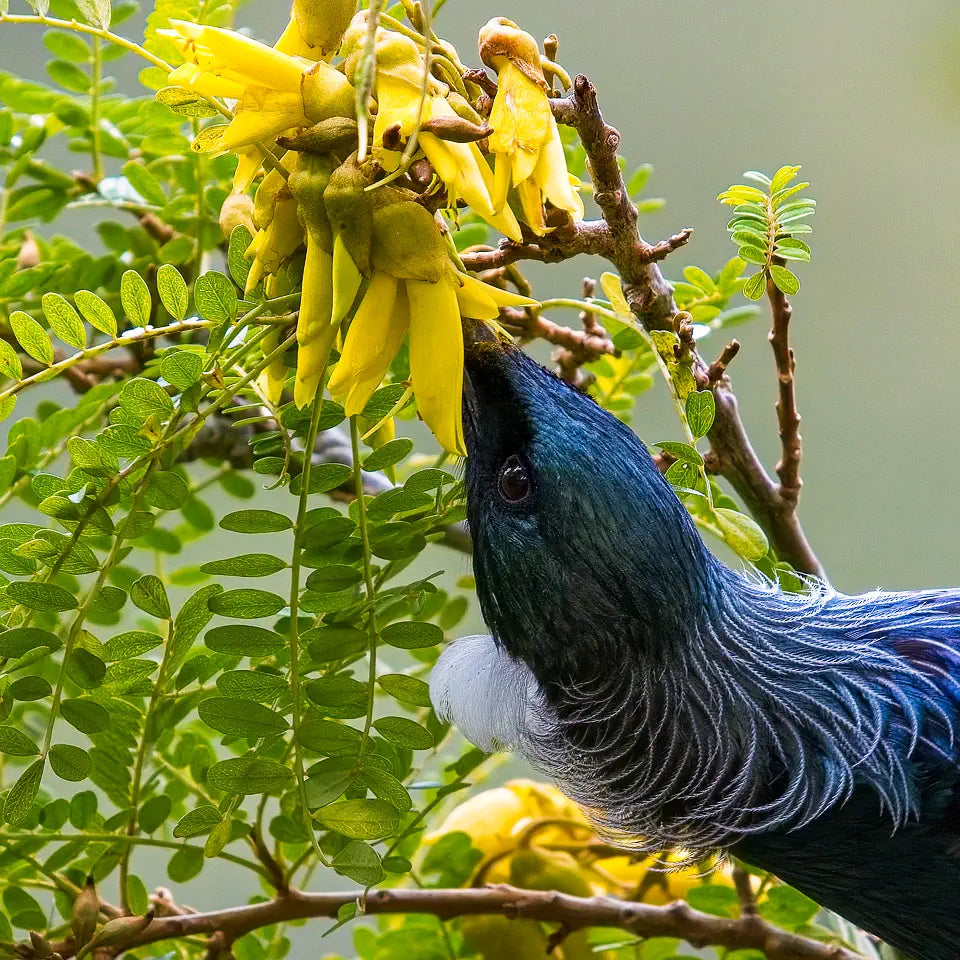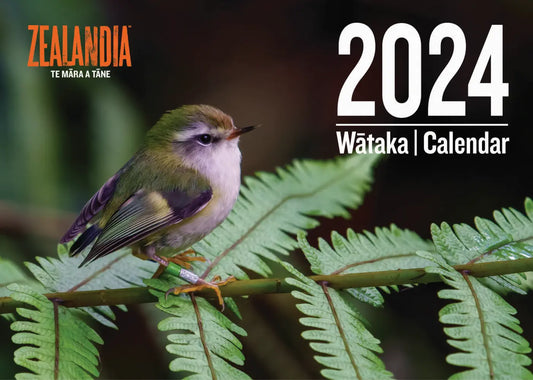
Joyous signs of spring
Share
A tūī feeding on kōwhai nectar
After a dreary wet winter, we're all desperately searching for signs of spring. Yesterday, after a brief gap between rain and more rain, we ventured out to nearby Ōtari-Wilton's Bush to find some early-flowering kōwhai. It was quite disconcerting how many slips we passed along the way. Over the weekend, Ōtari itself had also experienced a massive slip.
For those outside of Wellington, Ōtari is a botanic garden specializing in native and endemic plants of Aotearoa, including the overshore islands. It also has a remnant of original Pōneke forest, with a huge rimu tree pride of place. It is an incredible natural asset to Wellington, providing native forest for the birds spilling over from Zealandia EcoSanctuary.
This glorious kōwhai put us in good cheer. It's in the Chatham Islands collection, and unlike some kōwhai, has both flowers and leaves at the same time. It is a bird magnet, with not much else flowering yet.
As you might guess, there was one very stroppy tūī who decided he owned the tree. He spent most of his time fending off three kākā for the nectar goodness. One of the kākā was a youngster, purple-banded earlier this year at nearby Zealandia, now off exploring the big wide world, so that was lovely to see!
It was interesting to see how the different birds approached feeding. The tūī inserts its bill directly down the kōwhai flower and uses its long brush-tipped tongue to lap up the nectar. It often needs to stretch to get to the flowers. By comparison, the kākā grabs a footfull of kōwhai flowers to pull them closer, then uses its huge but delicate beak and tongue to get directly into the base of the flower. They too have a brush-tipped tongue. Both bird species end up with their faces dusted thickly with kōwhai pollen, pollinating the flowers as they gorge on the nectar.
Also profusely flowering are the mānuka (tea tree) bushes. There are some gorgeous pink-flowered specimens at Ōtari, and I couldn't help but create some dark and moody photos. The intention was to continue with a bright and cheery theme, but I couldn't help myself.
In search of spring, I was also recently inspired to create this embellished watercolour artwork "Dreaming of Spring", featuring native puawhananga (Clematis paniculata).
Although I spend most of my time in the digital world where there are billions of colours to hand, it's hard to resist pigmented paints, filled with history and lore. This piece was created with just three pigments: vivacious French Ultramarine, moody Perylene Green, and mysterious Serpentine. The latter is a wonderful green pigment from Australia that granulates into green and burnt scarlet particles, given huge depth and texture. I love how these three colours play together. I couldn't resist some gold accents to bring it to life and add extra cheer. Given the positive reaction to this piece, it's now available as an embellished print where the gold stamen are hand-painted giving each print a touch of joy and uniqueness.
Are you seeing signs of spring yet?












2 comments